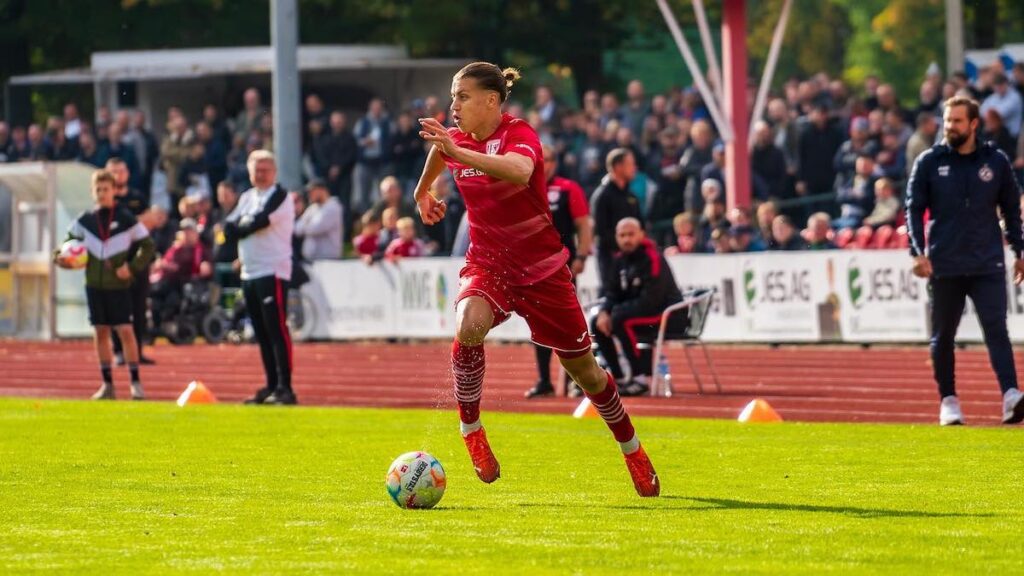S
Staff Reporter
Guest
What is Regionalliga? Discover The 4th Tier of German Football
Unlike soccer in America, Germany has a multi-tired hierarchically interconnected league system of leagues with promotion and relegation … and everything depends upon the performance of a team. International Soccer Academy’s Isabela Ramesh explains how and why football is Germany is so different in a new series.
Americans know the name of the top Bundesliga champions … especially the current champions FC Bayern Munich … this impressive club has won the title 32 times and is globally recognized but what about the hundreds of other football clubs in Germany? The Bundesliga is the top #1 league in Germany but if you want to appreciate the pyramid of soccer in Deutschland, it is important to discover the lower levels … and there are nine league levels!

THE POWER OF GERMANY’S FOURTH TIER OF SOCCER
The Regionalliga is considered a semi-professional league, with many of the clubs featuring a mix of professional and amateur players. Some clubs have strong youth systems and act as feeders for the professional clubs in the Bundesliga and 2. Bundesliga.
The fourth tier of the German football league system is the Regionalliga, which is divided into five regional leagues – Nord, Nordost, West, Südwest, and Bayern. The Regionalliga is one level below the 3. Liga, the third tier of German football and fans travel to support their favorite teams.
With top-quality play, the soccer played in the Regionalliga league is a breeding ground for scouts and head coaches. Here is a link to the Regionalliga table.
As a gateway to the higher level of professional football in Germany, there have been several German professional players who have played in the Regionalliga before playing in the Bundesliga.
Here are a few examples:
- Mats Hummels: The central defender, who has won numerous titles with Bayern Munich and the German national team, played for Bayern Munich II in the Regionalliga before making his debut for the first team.
- Joshua Kimmich: The German midfielder, who is also a key player for Bayern Munich and the German national team, began his professional career with RB Leipzig in the Regionalliga Nordost. He then moved to VfB Stuttgart and later joined Bayern Munich, where he has won multiple Bundesliga titles and other trophies.
- Serge Gnabry: The speedy winger, who also plays for Bayern Munich and the German national team, played for VfB Stuttgart II in the Regionalliga before moving to Arsenal and later returning to Germany.
- Julian Weigl: The defensive midfielder, who now plays for Benfica in Portugal, played for 1860 Munich II in the Regionalliga before making his debut for the first team and later moving to Borussia Dortmund.
- Max Kruse: The striker, who has played for several top clubs in Germany and abroad, played for SV Wilhelmshaven in the Regionalliga before moving up to the second division and eventually the first division.
- Timo Werner: The German forward, who is currently playing for RB Leipzig in the Bundesliga began his professional career with VfB Stuttgart II in the Regionalliga Süd before moving to the first team and then joining RB Leipzig. He became one of the top goalscorers in the Bundesliga before moving to Chelsea in the English Premier League.
Each Regionalliga consists of 18 teams, with the top team from each league earning promotion to the 3. Liga. The teams finishing in the bottom three places of each Regionalliga are relegated to the Oberliga, the fifth tier of the league system.
In Germany, it is common for top-flight clubs to have a reserve or second teams that compete in the lower leagues. In the case of the Bundesliga, several clubs have second teams that compete in the Regionalliga. Some examples of Bundesliga clubs with second teams competing in the Regionalliga are:
- Borussia Dortmund II
- Bayern Munich II
- Borussia Mönchengladbach II
- Werder Bremen II
- VfL Wolfsburg II
- FC Schalke 04 II
- FC Köln II
- Hertha BSC II
These clubs typically use their second teams to develop young players and provide a pathway to the first team. The Regionalliga is highly competitive, with many clubs fighting for promotion to the 3. Liga each season.

Joe Joe Richardson plays for Germany’s Greifswalder FC
An example of a team recently promoted to the Regionalliga is Greifswalder FC which plays in Regionalliga Nordost. International Soccer Academy’s alumni Joe Joe Richardson plays for Greifswalder FC. This American born soccer player is a regular starter on the squad and just recently signed his second contract with the German club coached by Roland Kroos (Real Madrid’s Toni Kroos’ dad).
The league also provides opportunities for players to develop their skills and potentially earn professional contracts with higher-level clubs.
Keep in mind that Germany has one if the highest global average attendances at soccer matches and German fans are not distracted by a divergence of multiple sports. In Germany, there is enough passion for the beautiful game to support the success of multiple levels of leagues.
The post GERMAN SOCCER DISCOVERED: GATEWAY TO THE PROFESSIONAL LEVELS appeared first on SoccerToday.
Continue reading...
SoccerToday News from Diane Scavuzzo
